The St. Anne Parish Church is one of the most beautiful churches in Western Visayas. It is an awesome imposing edifice of white coral rock. It will be once again the center of the celebration of the fiesta of the District of Molo, Iloilo City on July 26.
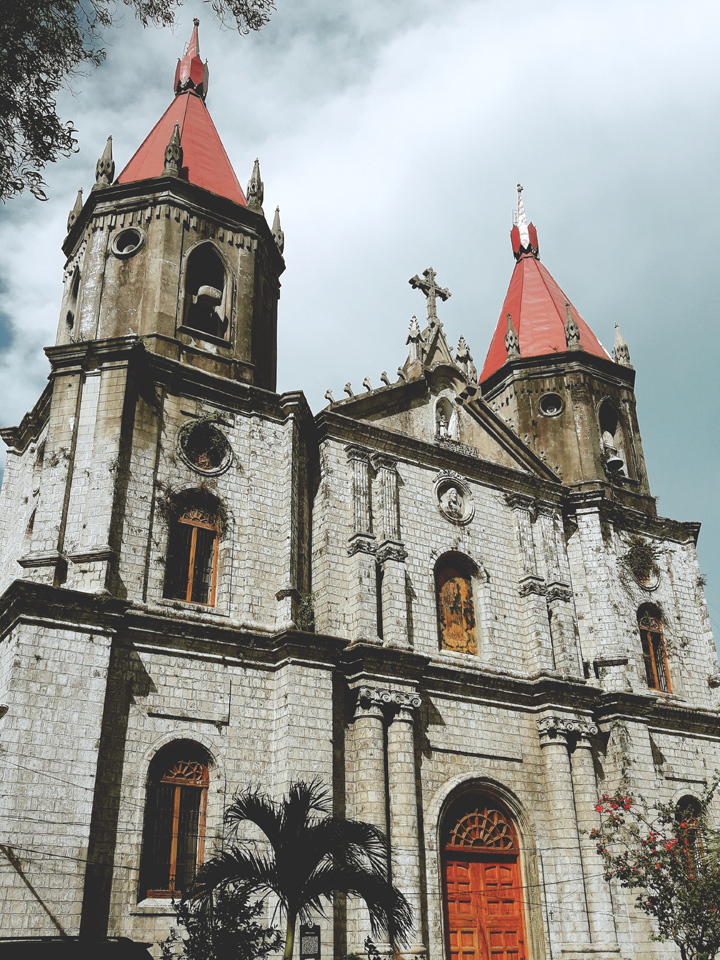
The Gothic Character
This is the only Gothic church in the entire country outside of Manila. The construction began in 1831 under Fray Pablo Montaño and its expansion was completed under Fray Agapito Buenaflor in 1888 under the supervision of Don Jose Manuel Locsin.
The two belfries had around thirty bells of different sizes ranging from small hand bells to big campaniles making a musical tone.
The gothic character of the church is manifested not only in its two-pointed towers but also on the pointed arches at the main altar and four side altars, podiums, and confessionals.
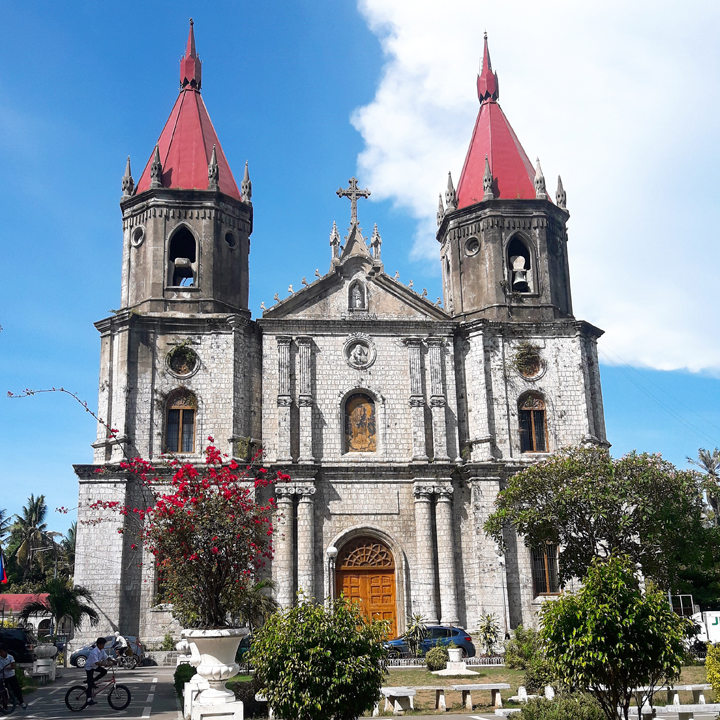
Read also: List of Iloilo City Cultural Heritage Sites
La Iglesia Bonita
On August 4, 1886, Jose Rizal, our national hero paid a visit at Molo on his way back to Manila from exile in Dapitan in Mindanao.
Raymundo Melliza, his friend was the one who showed him the church.
In his diary, Rizal wrote: ¨We went to Molo to see the church painted by a lad who has left the locality. The church is pretty (Iglesia Bonita) outside with paintings inside mostly copies of biblical scenes by Gustay Dore.¨
There were two painters who painted the murals inside the church, Mariano Mabunay and Jesus Huervas.
The church was so strong that it withstood several strong earthquakes in the past. During World War II, it was the evacuation center of the civilians supervised by its parish priest, Msgr. Manuel V. Alba.
One of the original towers which was a Japanese machine gun nest was destroyed on March 18, 1945, when shelled by the artillery of the United States Liberation Forces bringing its bells crumbling to the ground.
After the war, restoration of the damaged parts of the church was undertaken by Msgr. Alba and Gove. Timoteo Consing, Sr.
Dedication to Santa Ana
On July 26, 1977, Archbishop Alberto J. Piamonte dedicated the church to Santa Ana, the mother of the Blessed Virgin Mary.
The church has larger-than-life images of female saints lined in two rows (eight on each side) inside the church, each standing on a pedestal attached to a massive stone pillar and under the gothic-style canopy.
The Saints at Molo Church
These saints are:
Sta. Marcela, Sta. Apolonia, Sta. Genoveva, Sta. Isabel, Sta. Felicia, Sta. Ines, Sta. Monica, Sta. Magdalena, Sta. Juliana, Santa Lucia, Sta. Rosa de Lima, Sta. Teresa, Sta. Clara, Sta. Cecilia, Sta. Margarita, Sta. Marta.
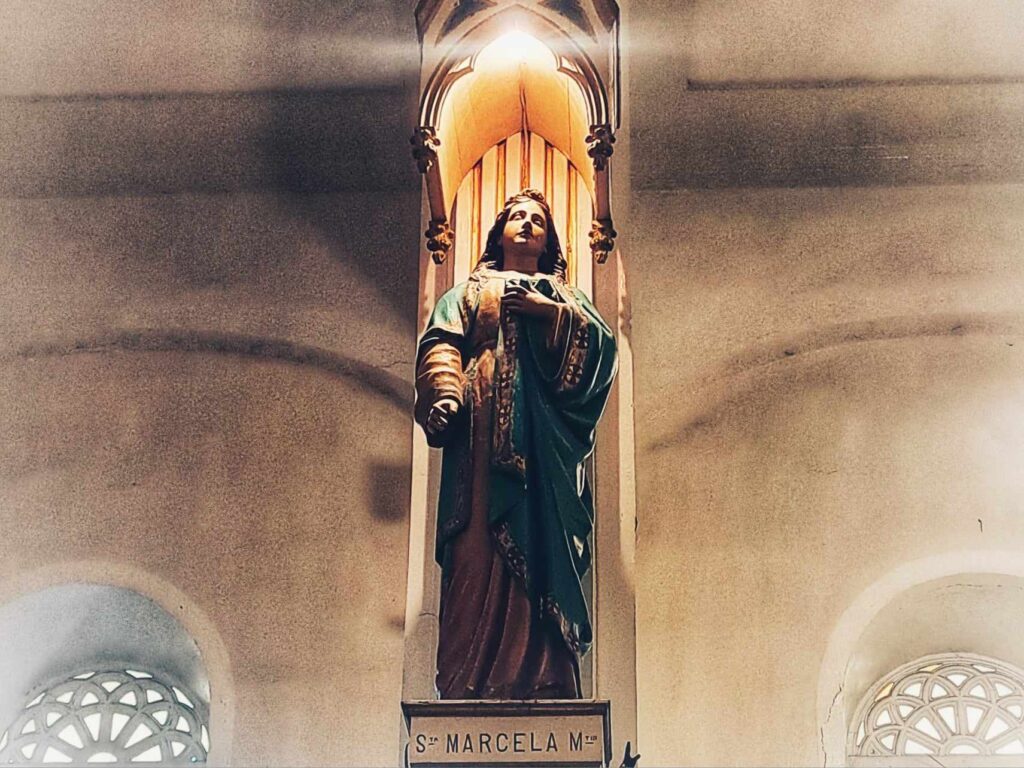
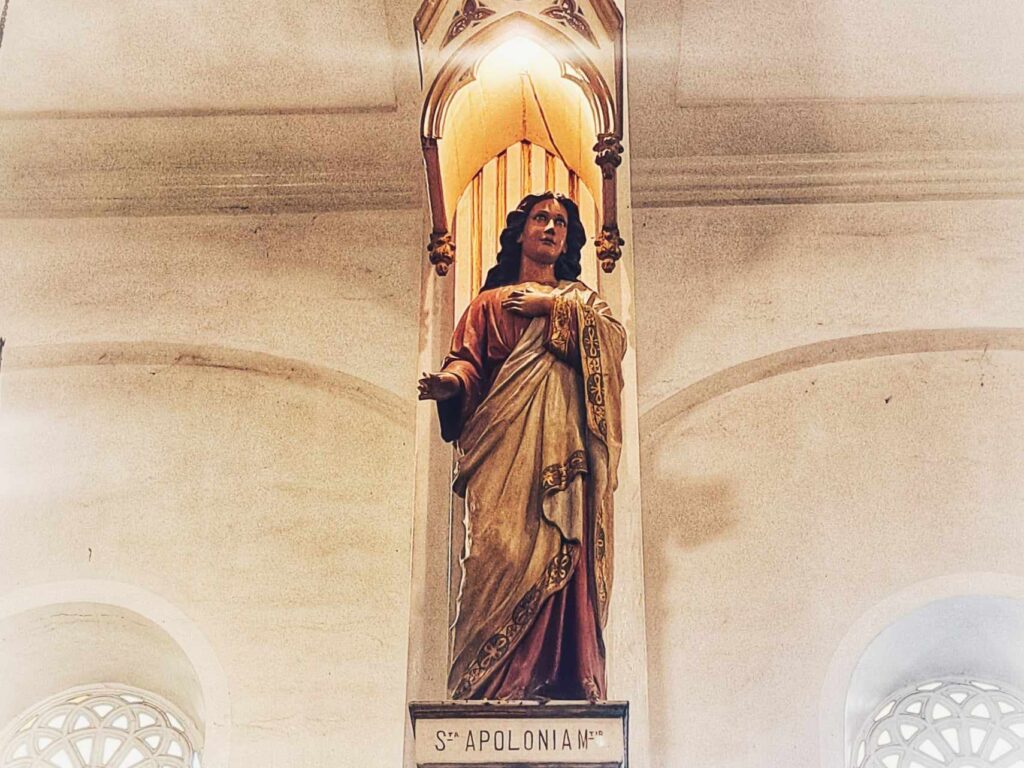

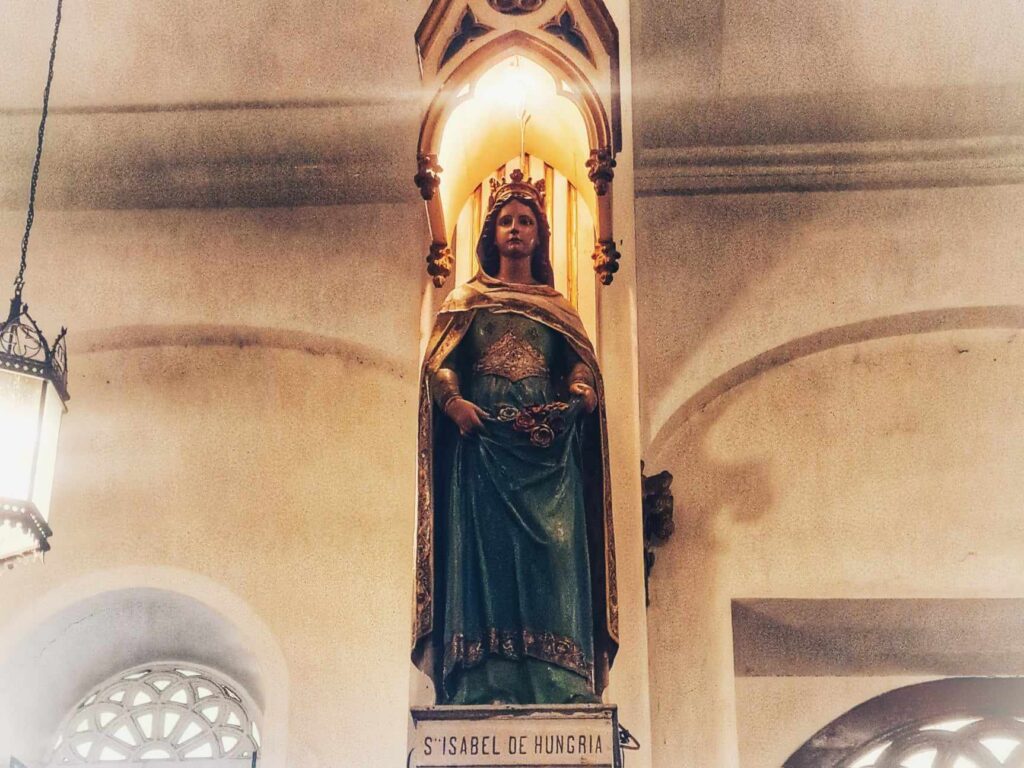
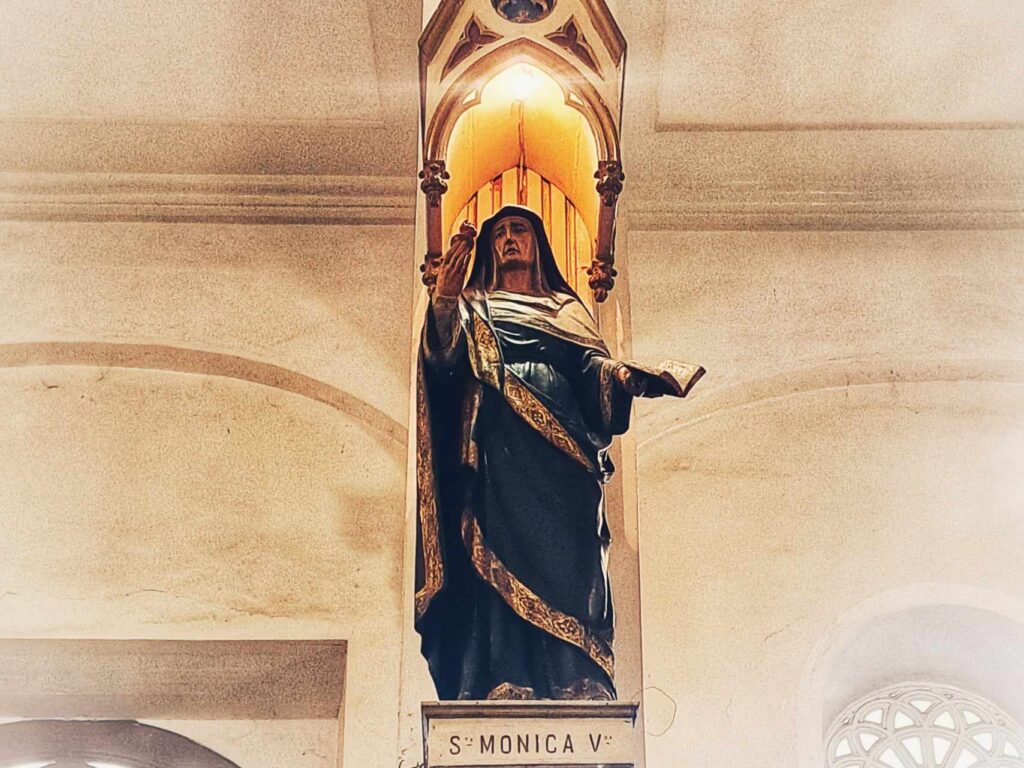
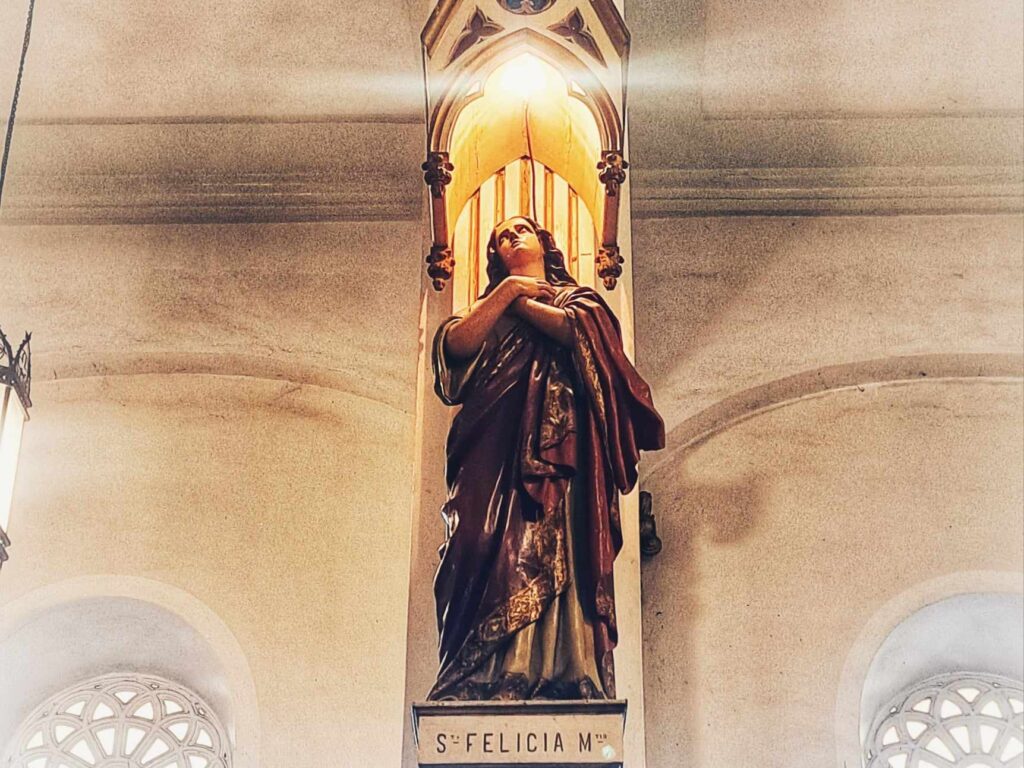
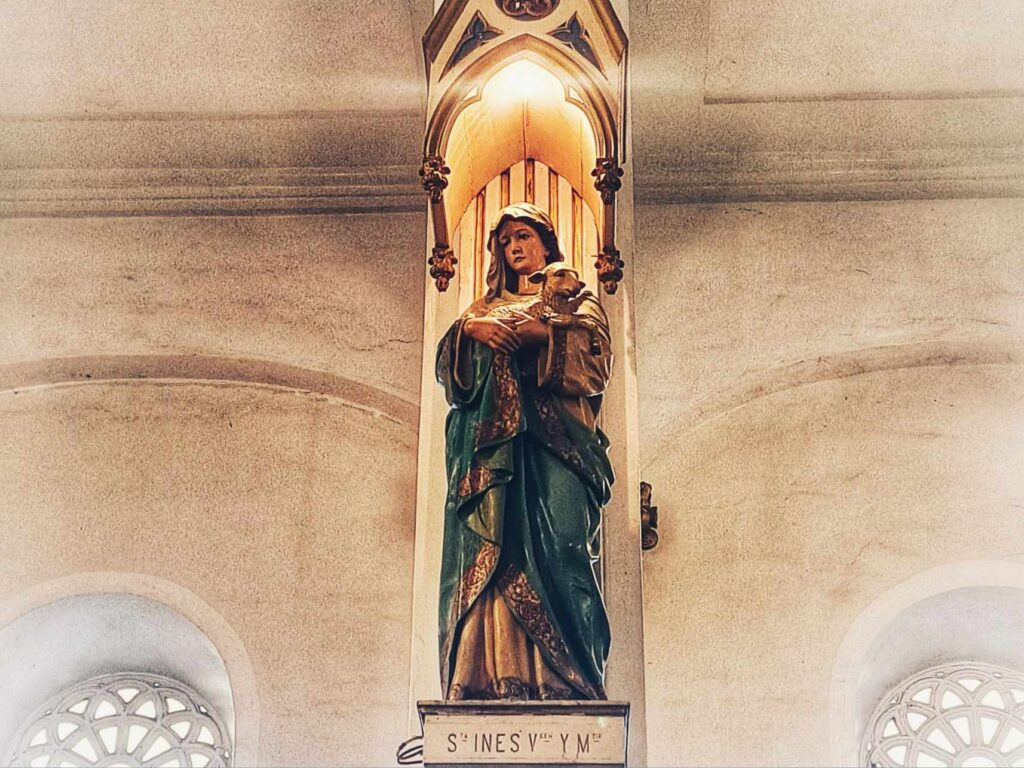
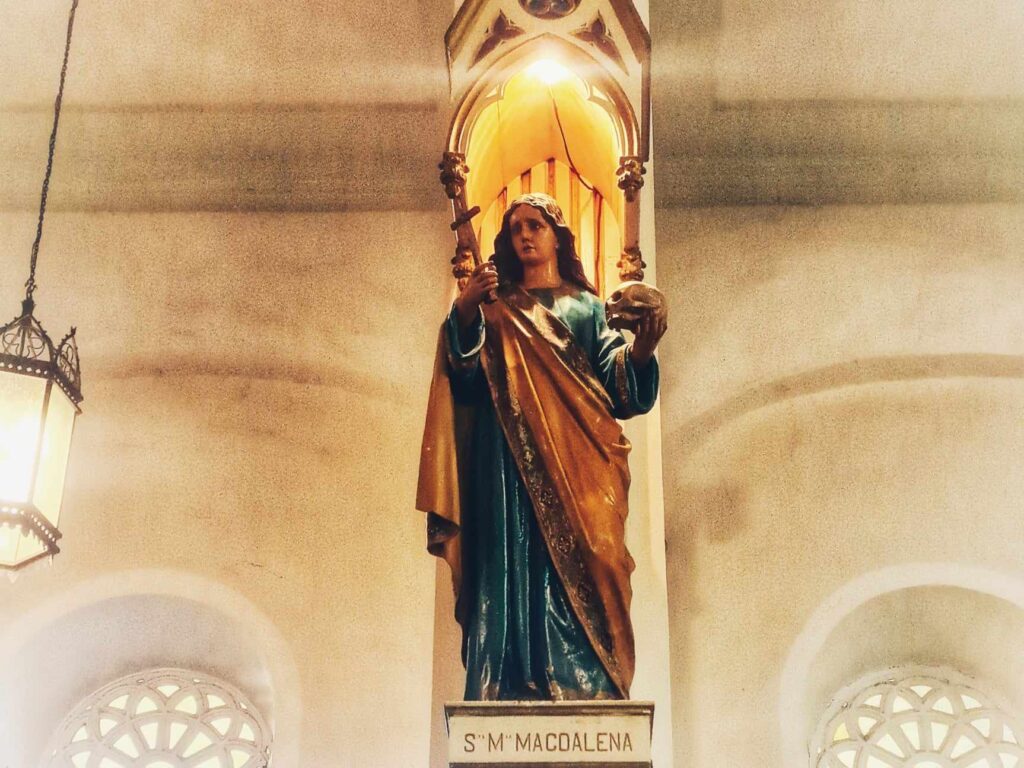
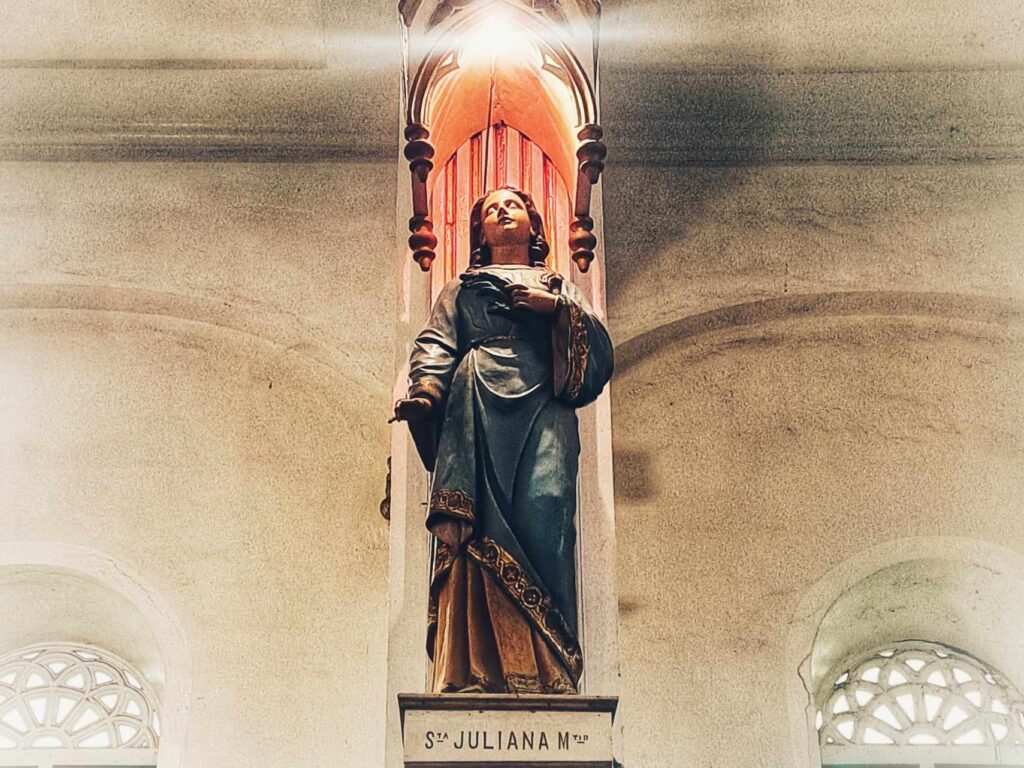
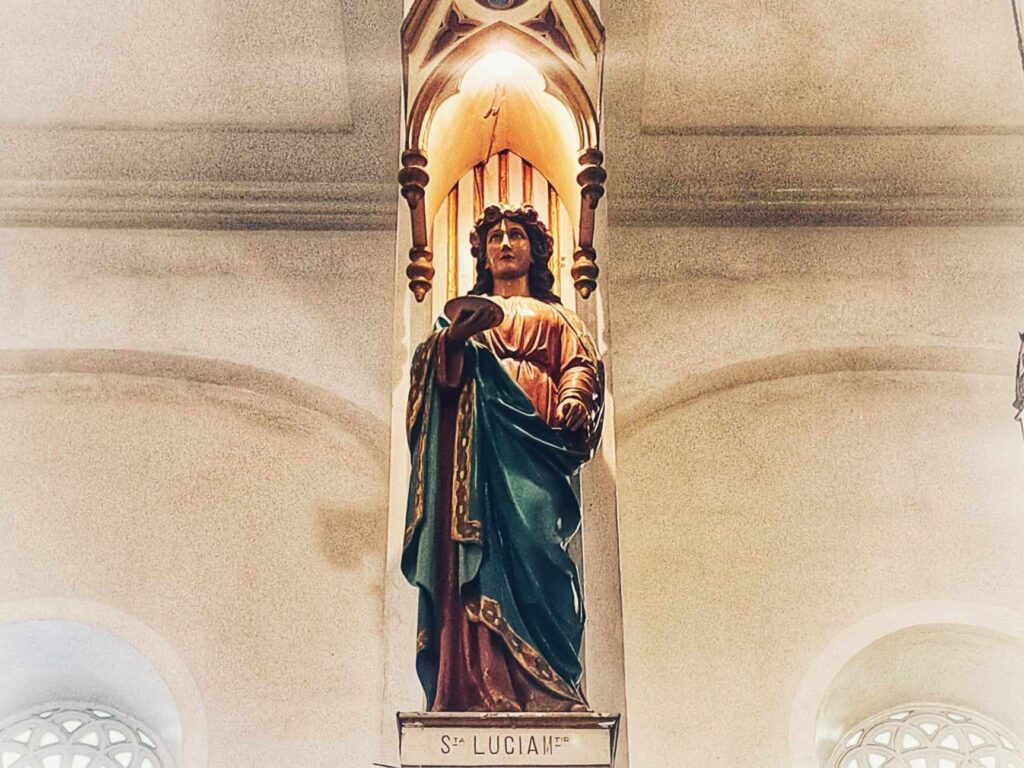
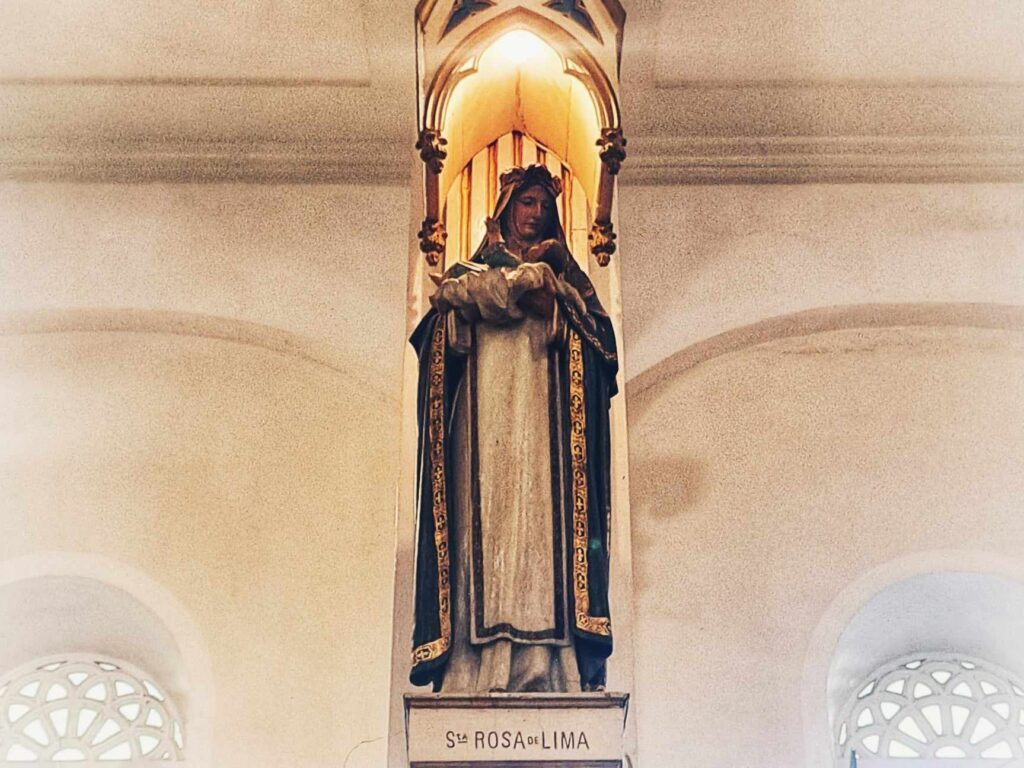
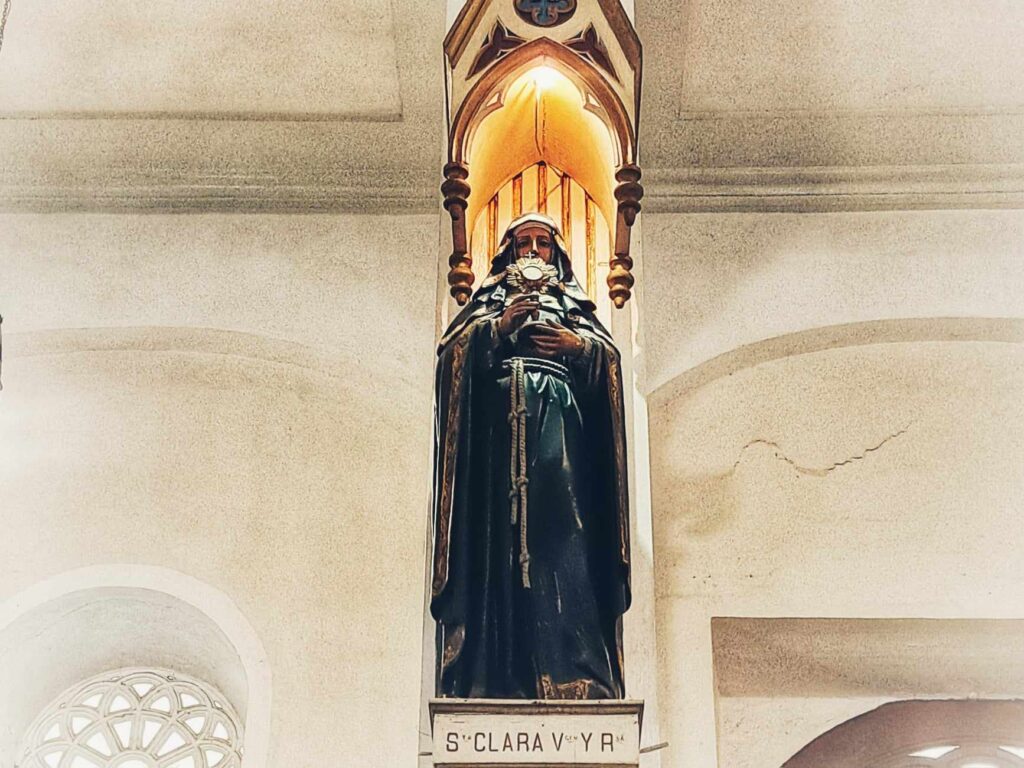
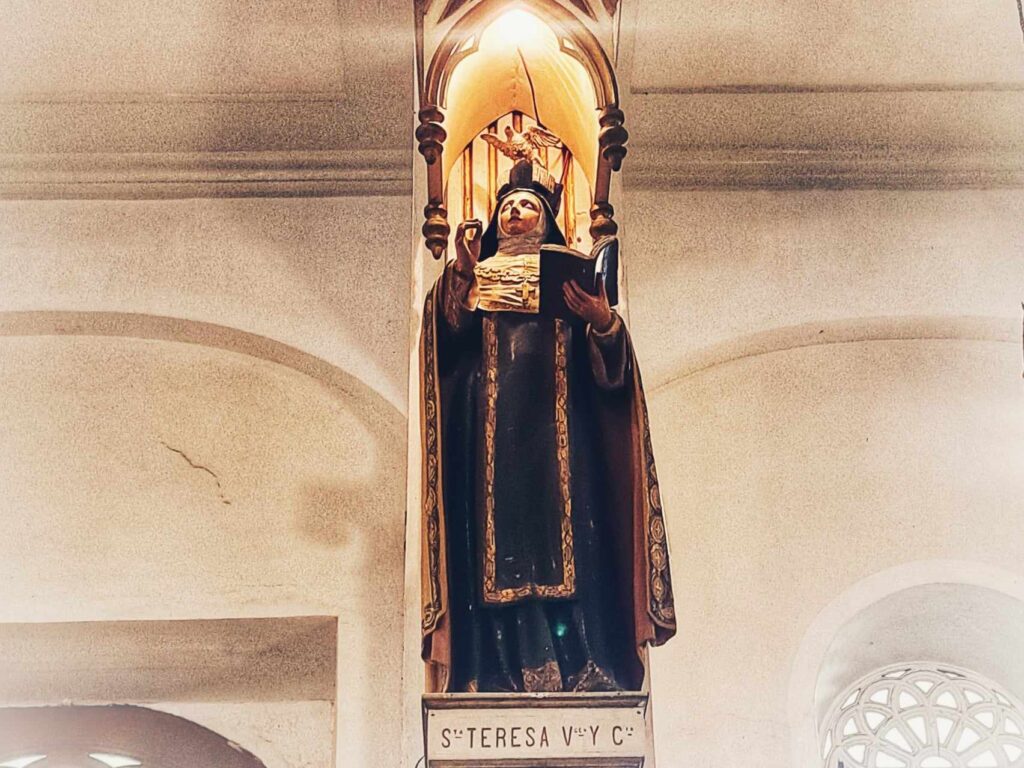
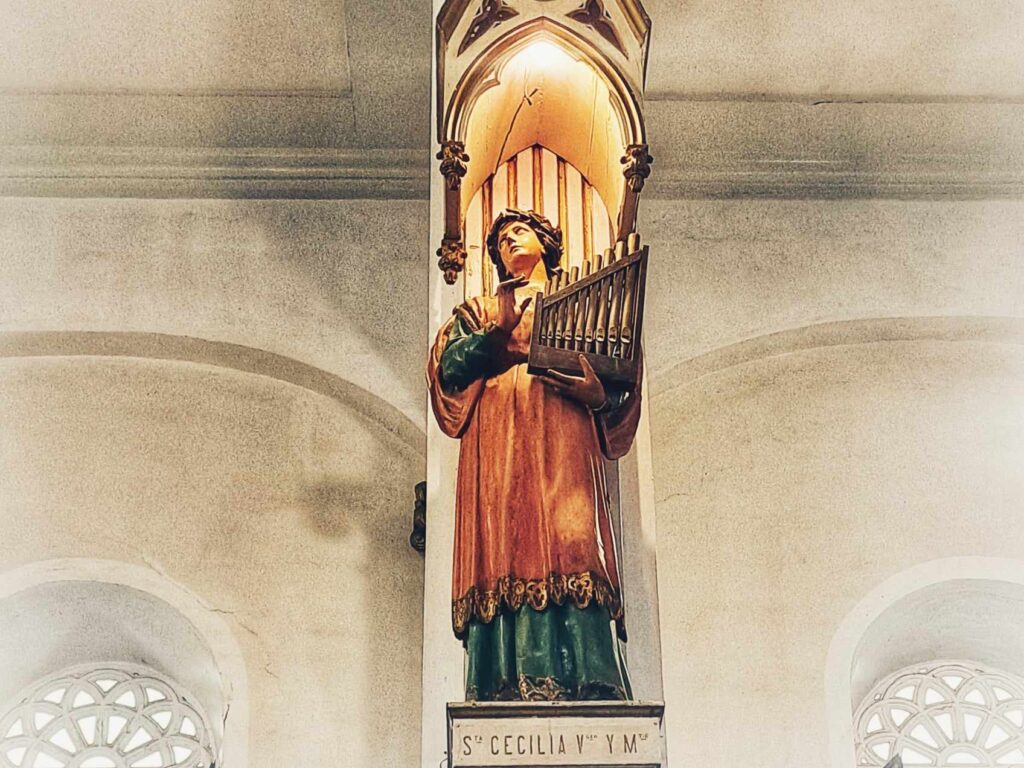
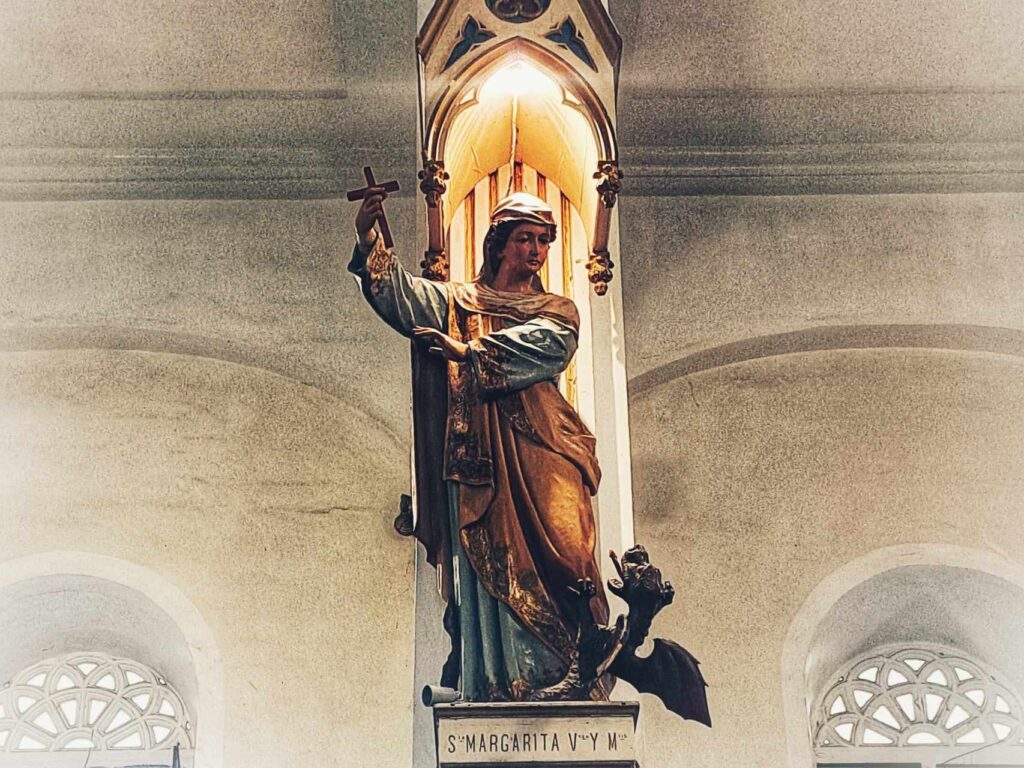
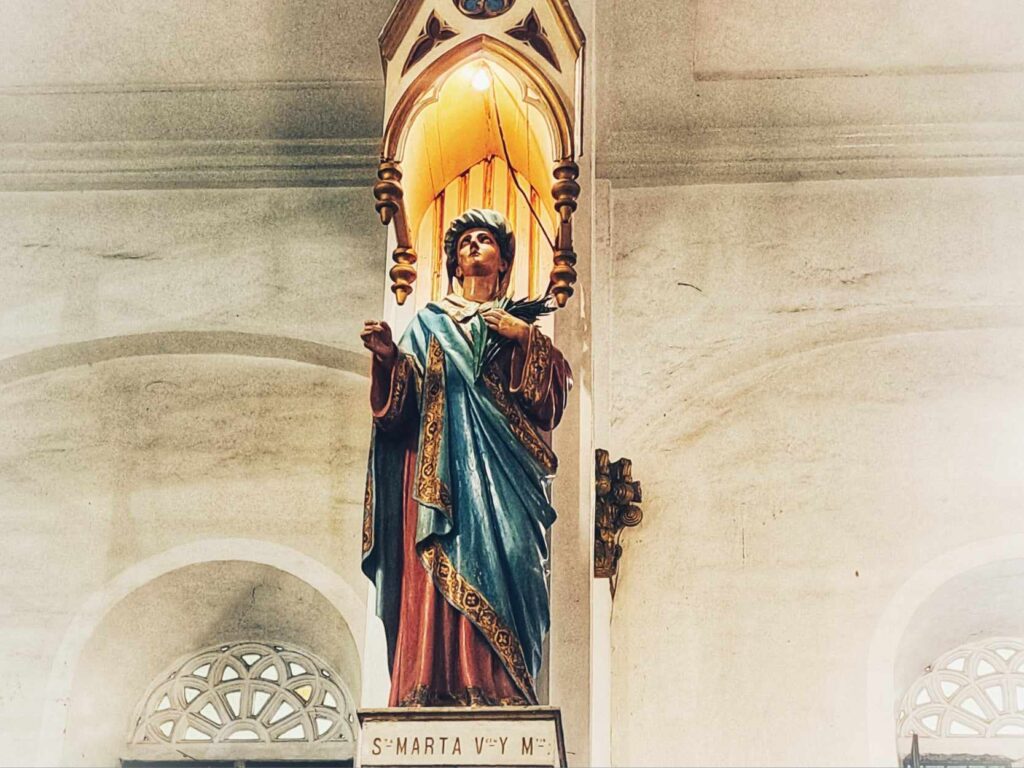
While the female saints are kept inside the church, the streets around the vicinity of the parish are named after the male saints, namely San Jose, San Antonio, San Marcos, and San Pedro simply showing how the Moleños give protection to the Moleñas.
At the main altar is Santa Ana, teaching the scripture to the child Mary with the Holy Trinity at the top.
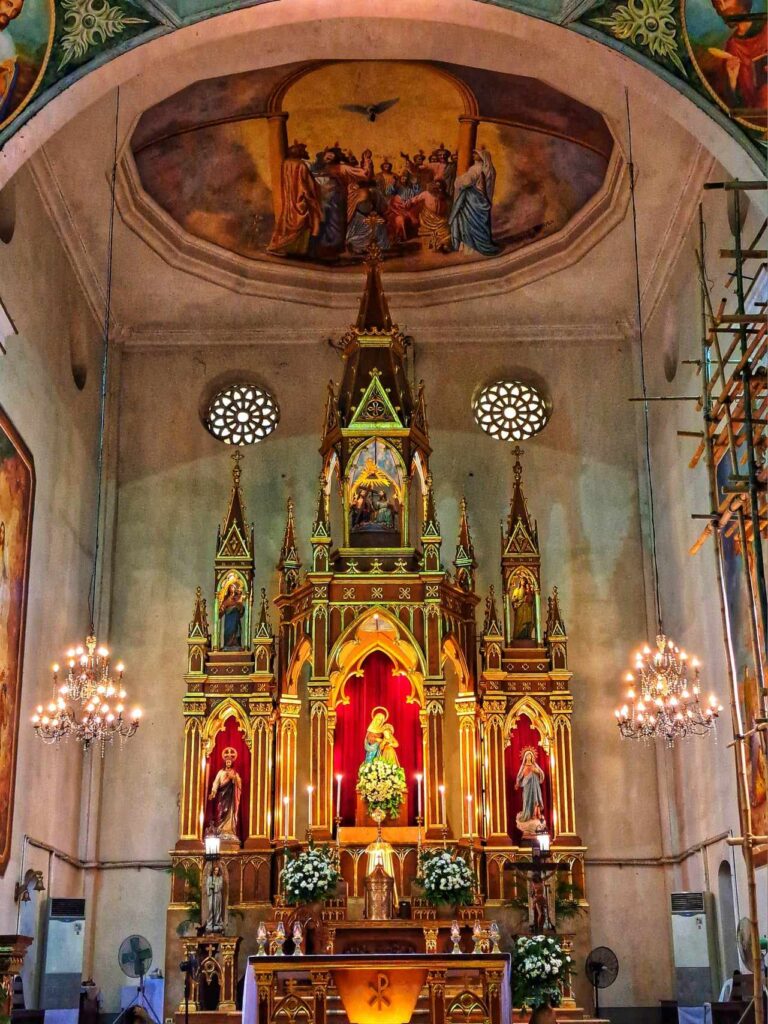
The right-side altar has Sagrado Corazon de Jesus, San Judas Tadeo, San Esteban, and Sta. Rita de Casia.
At the ceiling of the dome are paintings of the four evangelists.
Recently, murals of the Crucifixion and Resurrection were added at the sides of the main altar. Biblical scenes and paintings of San Miguel and San Rafael were also added at the door.
On the steps of its door are the rare piedra china.
Further restoration of the church is still undergoing through the supervision of Engr. Timoteo V. Consing, Jr. And recently in coordination with the National Historical Institute through the efforts of Sen. Franklin Drilon.
In 1992, the National Historical Institute installed a marker on the church declaring it a national landmark through the representation of Sir Knight Re S. Salvilla.
List of the Parish Priests of Molo since 1975
Here is the list of the parish priests of Molo since 1975:
Fr. Joe de Carvajal
Leon Magbanua
Hermogenes Magallanes
Felix Gonzaga
Andre Picson
Luciano Nicolas
Pablo Montano
Juan de la Cruz
Jose Sitchon
Agapito Buenaflor
Leonardo Lazaro
Juan Hofilena
Cornelio Salas
Miguel Diocson
Ciriaco Serrano
Nicolas Valencia
Miguel Alba
Polecarpio Parcon
Fernando Capalla
Fr. Felipe Pari-an
Fr. Tomas Delicana
Msgr. Claudio Sale
Rev. Fr. Espiridion Celis, Jr.
The following paragraphs are from: Reynaldo Gamboa Alejandro and Vicente Roman Santos in Estilo Ilonggo: Philippine Southern Lifestyle published by KCC Innovations in cooperation with DOT (2009).
The Molo Church was originally constructed of Tabique Pampango and Tisa. In 1863, perhaps due to disrepair, Fr. José Ma. Sichon converted it temporarily into one of nipa. The plans for the current church of stone in Gothic-Renaissance style were prepared in 1866 and approved by Bishop Don Mariano Cuartero in 1869. Construction followed immediately.
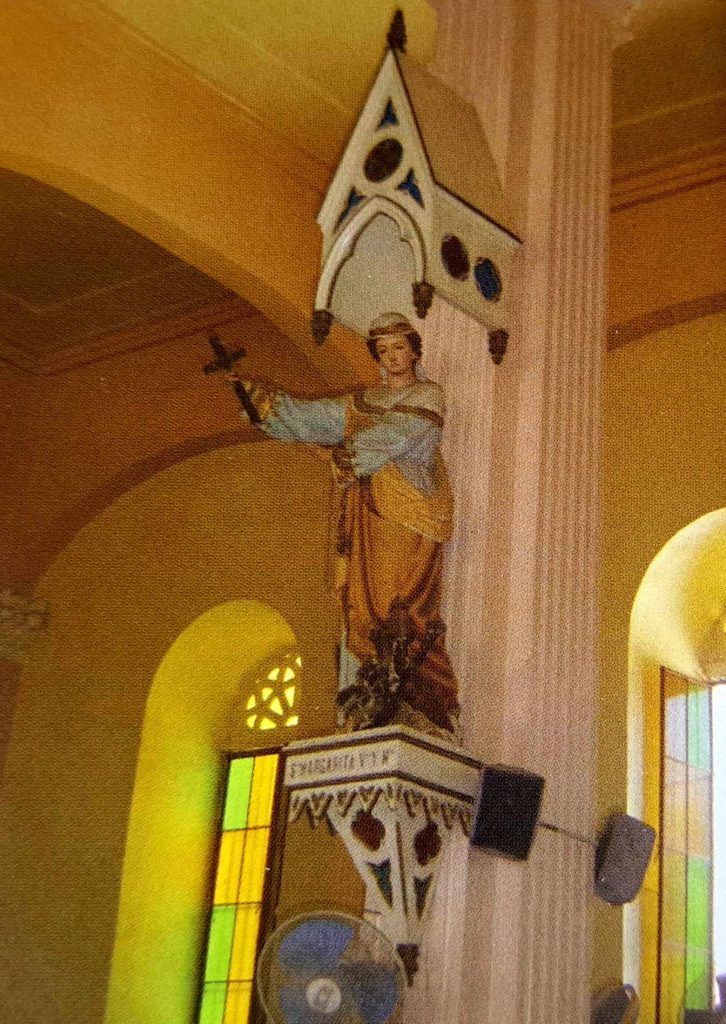
The church is dedicated to St. Anne, whose feast is celebrated on July 26. Renowned as a church for women, Molo Church features sixteen images of female saints, one for each Corinthian column within
Marcela, Apolonia, Genoveva, Isabel de Ungria, Mónica, Felicia, Inés, María Magdalena, Juliana, Lucía, Rosa de Lima, Teresita, Clara, Cecilia, Margarita and Marta.
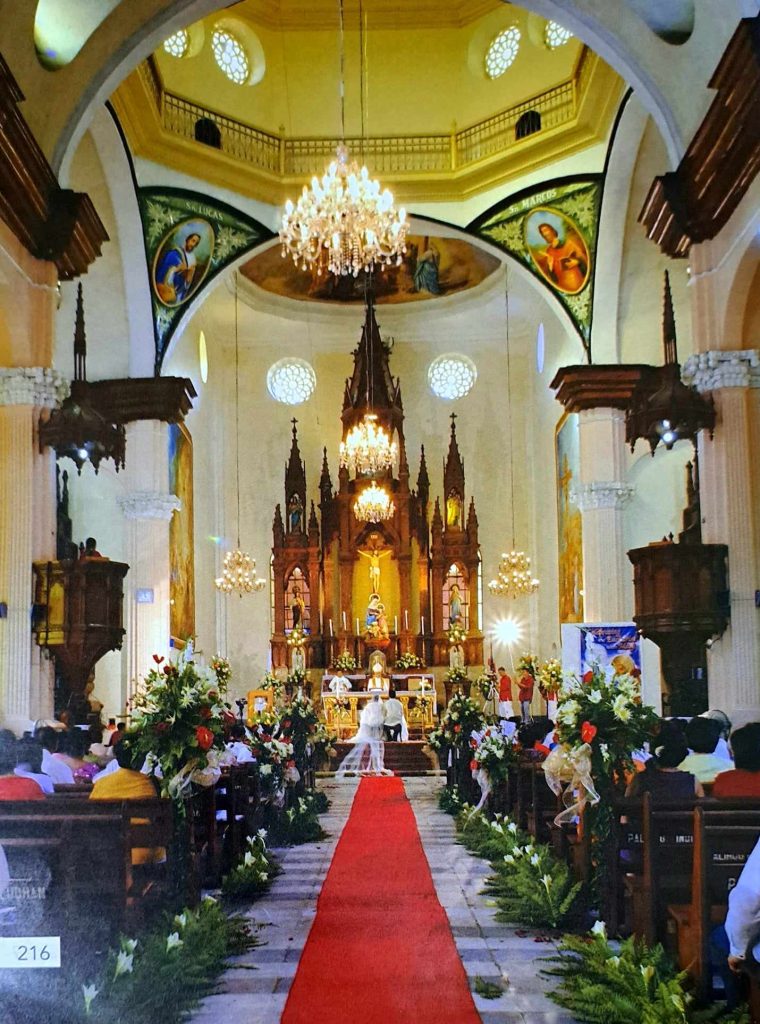
The religious frescoes above the altar were executed by unschooled local painters, Mariano Mabunay and Jesús Hervias. The church impressed a visiting José Rizal in 1896, en route from Dapitan to Manila.
How to Go to Molo Church
Here are the most convenient jeepneys you can board going to Molo Church:
ROUTE 7 COMPANIA TO CITY PROPER LOOP
ROUTE 7 COMPANIA TO CITY PROPER LOOP
ROUTE 13 HIBAO-AN TO CITY PROPER VIA TABUCAN HUB LOOP
ROUTE 15 MOLO TO CITY PROPER VIA BALUARTE LOOP
